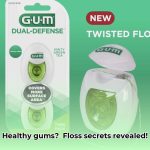Got puffy gums thanks to your braces? Don’t worry, it’s a common issue! This guide provides actionable advice and practical solutions for managing and preventing swollen gums during orthodontic treatment.
Understanding Swollen Gums and Braces
Experiencing swollen gums while wearing braces? You’re not alone. This is a frequent occurrence as your mouth adjusts to the presence of brackets and wires. Let’s explore the reasons behind this and what you can do.
Why Do Braces Sometimes Cause Swollen Gums?
Several factors may contribute to gum swelling with braces:
- Movement of Teeth: As braces gradually shift your teeth, your gums might become irritated and inflamed, especially after adjustments. This is usually temporary.
- Plaque Buildup: Braces create tiny spaces where food particles can get trapped, leading to plaque buildup and gingivitis (gum inflammation). Meticulous cleaning is crucial.
- Irritation from Braces: The brackets, wires, and bands themselves can sometimes rub against your gums, causing irritation and localized swelling.
- Gingival Hyperplasia: In some cases, braces can lead to an overgrowth of gum tissue, known as gingival hyperplasia. This is less common but requires professional attention if it occurs.
- Rare Allergic Reactions: Although uncommon, some individuals might experience an allergic reaction to the metal in their braces. Consult your orthodontist if you suspect this.
Ongoing research continues to investigate the relationship between gum health and orthodontic treatment, including the role of genetics and specific bacteria.
Effective Home Remedies for Swollen Gums
Dealing with swollen gums? These home remedies can provide relief:
- Warm Salt Water Rinse: Dissolve half a teaspoon of salt in a cup of warm water and swish gently for 30 seconds, several times a day. Salt water can help soothe irritated gums and reduce inflammation.
- Over-the-Counter Pain Relief: Ibuprofen or acetaminophen can help manage discomfort and reduce swelling. Follow package directions.
- Cold Compress: Applying a cold compress to your cheek can offer soothing relief and minimize swelling.
- Soft Foods: Opt for foods that are easy to chew, such as yogurt, soup, and mashed potatoes, to avoid further irritating your gums.
- Clove Oil (Diluted): Some individuals find relief from diluted clove oil applied sparingly to the gums, but consult your orthodontist before using any herbal remedies.
When to Seek Professional Help
While home remedies can be helpful, professional intervention is sometimes necessary. Contact your orthodontist if you experience:
- Persistent Swelling: Swelling that lasts more than a week after an adjustment.
- Excessive Swelling: Gums that are significantly swollen or almost covering the brackets.
- Bleeding Gums: Persistent bleeding, not just a little pink on your toothbrush.
- Pus or Infection: Any signs of pus, fever, or localized pain.
- Loose Teeth: Teeth that feel loose or are shifting position.
- Severe Pain: Pain that is not managed by over-the-counter medication.
- Broken or Poking Braces: Any issues with your braces themselves.
Early intervention can prevent more serious gum problems and ensure a healthy smile journey.
Proactive Prevention Strategies: Maintaining Healthy Gums with Braces
Preventing swollen gums is the best approach. Here are some key strategies:
- Brushing Like a Pro: Brush for at least two minutes after every meal and snack using a soft-bristled toothbrush angled at 45 degrees to clean around brackets and wires. Consider an electric toothbrush designed for braces.
- Flossing Daily: Use floss threaders or a water flosser to remove food particles trapped between teeth and braces. This is crucial for preventing plaque buildup.
- Antiseptic Mouthwash: Rinse with an antiseptic mouthwash to eliminate lingering bacteria and freshen your breath. A fluoride rinse provides additional cavity protection.
- Healthy Diet: Limit sugary and sticky foods that can adhere to braces and promote plaque formation. Choose braces-friendly options like soft fruits, cooked vegetables, and yogurt.
- Regular Dental Checkups: Schedule regular checkups and professional cleanings with your dentist and orthodontist. They can remove stubborn plaque and tartar and address any potential issues early on.
Summary of Symptoms and When to Seek Help
| Symptom | Gingivitis (Early Gum Disease) | Periodontitis (Advanced Gum Disease) |
|---|---|---|
| Gums | Red, swollen, tender, bleed easily | Receding, pulling away from teeth |
| Teeth | May be sensitive | Loose, may feel like they’re shifting |
| Other | Bad breath | Pus between teeth and gums, persistent bad taste |
| Professional Help Needed? | If symptoms persist or worsen | Yes, immediately |
By following these preventive measures and seeking professional help when necessary, you can maintain healthy gums and enjoy a comfortable orthodontic experience, ultimately achieving a beautiful, healthy smile.
- Affordable Employee Wellness Fair Ideas for Any Budget - December 14, 2025
- Employee Wellness Programs Strategically Benefit Employee Health And Retention - December 13, 2025
- Health and Wellbeing Companies Driving Employee Engagement and Productivity - December 13, 2025
















